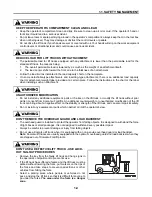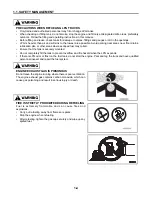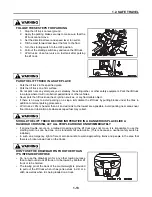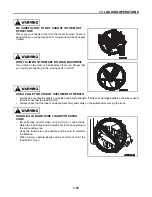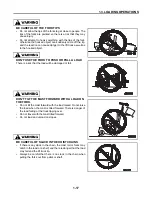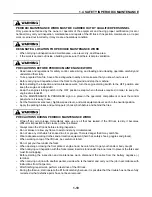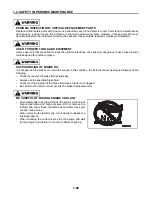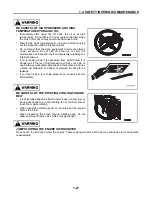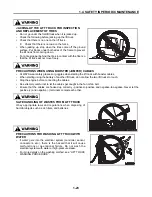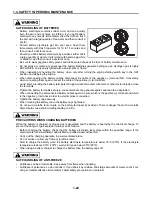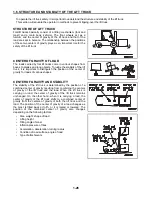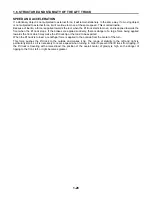
1.3. LOADING OPERATIONS
1-14
1.3.
LOADING OPERATIONS
PRECAUTIONS FOR LOADING AND UNLOADING
• If you operate the lift truck in such a posture that your weight
is not properly applied to the seat, like standing up or leaning
forward or sideways, Travel Interlock begins to alarm in
approximately three seconds and cuts off the transmission
of engine power. Then the truck does not move even if you
depress the accelerator pedal or operate the forward-
reverse lever.
The truck will slide downhill if Travel Interlock activates on
an uphill grade or a slope.
• Select flat and solid ground for loading and unloading. Avoid
a road shoulder or a place near a cliff.
• Use ramps of sufficient length, width and strength. Moreover, set them securely so that they will not shift or be
displaced.
• Always operate the mast and forks from the operator's compartment. Be careful not to operate the lever by
mistake. There is danger that the forks or work equipment may cause serious injury.
KEEP UNAUTHORIZED PEOPLE OUT OF WORKING AREA AND ENSURE A SIGNAL PERSON IS
ON DUTY
• Do not allow anyone in the working area except the signal person.
• Do not let any person or other lift truck come close during operation.
• When working with a signal person, always follow their instructions.
NEVER GO BENEATH RAISED FORKS
The space under a lifted fork is an area of danger, so never
allow anyone to go under the fork. There is a danger of
personal injury to any person who could be crushed under the
forks when they come down.
STANDING ON THE FORK(S) IS STRICTLY
PROHIBITED
• Do not let anyone place a load on the forks.
• Do not let anyone directly remove the load from the forks.
• Standing on the forks is dangerous because the forks are
slippery and the load may move.
• Do not use anyone to keep the load stable. The lift truck may
move unexpectedly, causing the load to fall and crush the
person.
Summary of Contents for CX20 Series
Page 21: ...1 SAFETY...




